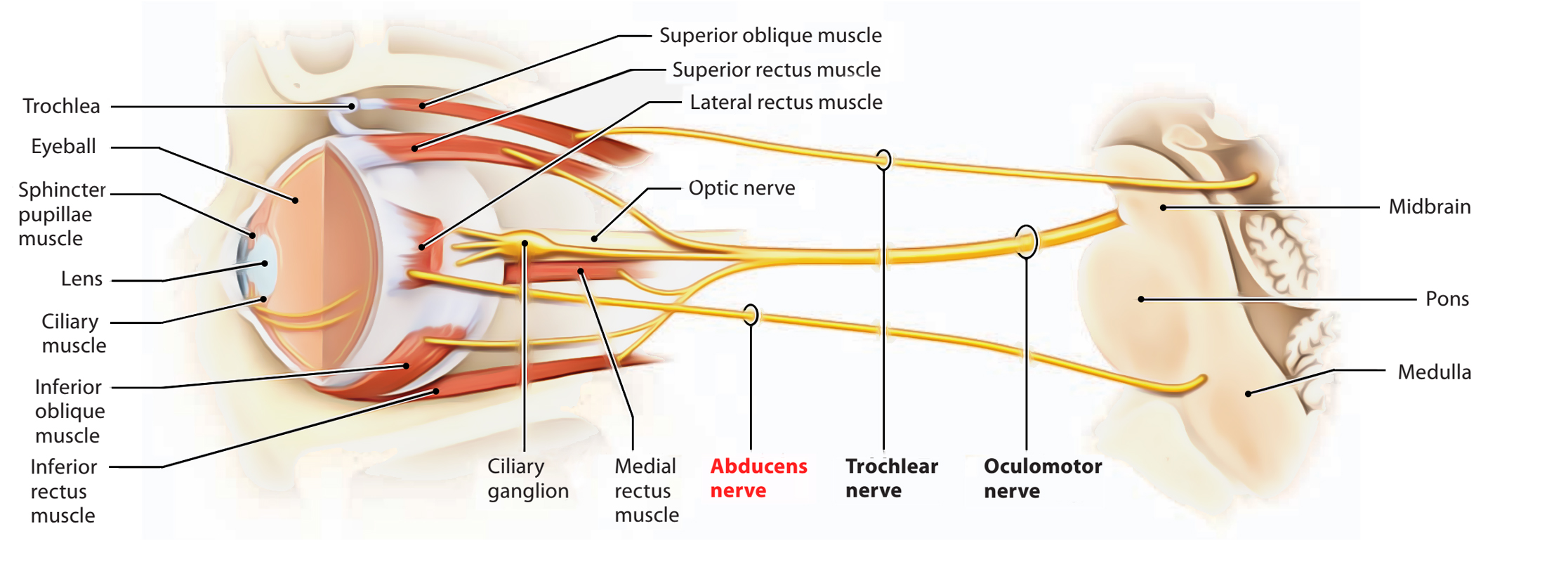Makindo Medical Notes"One small step for man, one large step for Makindo" |
|
|---|---|
| Download all this content in the Apps now Android App and Apple iPhone/Pad App | |
| MEDICAL DISCLAIMER: The contents are under continuing development and improvements and despite all efforts may contain errors of omission or fact. This is not to be used for the assessment, diagnosis, or management of patients. It should not be regarded as medical advice by healthcare workers or laypeople. It is for educational purposes only. Please adhere to your local protocols. Use the BNF for drug information. If you are unwell please seek urgent healthcare advice. If you do not accept this then please do not use the website. Makindo Ltd. |
Trochlear Nerve
-
| About | Anaesthetics and Critical Care | Anatomy | Biochemistry | Cardiology | Clinical Cases | CompSci | Crib | Dermatology | Differentials | Drugs | ENT | Electrocardiogram | Embryology | Emergency Medicine | Endocrinology | Ethics | Foundation Doctors | Gastroenterology | General Information | General Practice | Genetics | Geriatric Medicine | Guidelines | Haematology | Hepatology | Immunology | Infectious Diseases | Infographic | Investigations | Lists | Microbiology | Miscellaneous | Nephrology | Neuroanatomy | Neurology | Nutrition | OSCE | Obstetrics Gynaecology | Oncology | Ophthalmology | Oral Medicine and Dentistry | Paediatrics | Palliative | Pathology | Pharmacology | Physiology | Procedures | Psychiatry | Radiology | Respiratory | Resuscitation | Rheumatology | Statistics and Research | Stroke | Surgery | Toxicology | Trauma and Orthopaedics | Twitter | Urology
Related Subjects:
|Olfactory Nerve
|Optic Nerve
|Oculomotor Nerve
|Trochlear Nerve
|Trigeminal Nerve
|Abducent Nerve
|Facial Nerve
|Vestibulocochlear Nerve
|Glossopharyngeal Nerve
|Vagus Nerve
|Accessory Nerve
|Hypoglossal Nerve
The trochlear nerve (CN IV) is the smallest cranial nerve and the only one to emerge dorsally from the brainstem. It innervates the superior oblique muscle, enabling downward and inward eye movement. Because it decussates within the midbrain, each nerve controls the contralateral eye.
For diagrams of CN IV course and palsy features:
🔎 Anatomy & Course
🧩 Innervation & Function
⚡ Clinical Relevance
📊 Differentials: CN IV vs III vs VI Palsy
Nerve Muscle(s) affected Typical Findings
CN III (Oculomotor) Most EOMs, levator, sphincter pupillae “Down & out” eye, ptosis, dilated pupil
CN IV (Trochlear) Superior oblique Vertical diplopia, worse down/in; head tilt away from lesion
CN VI (Abducens) Lateral rectus Inability to abduct, horizontal diplopia
📌 OSCE Exam Tips
📚 References
🖼️ Visuals
